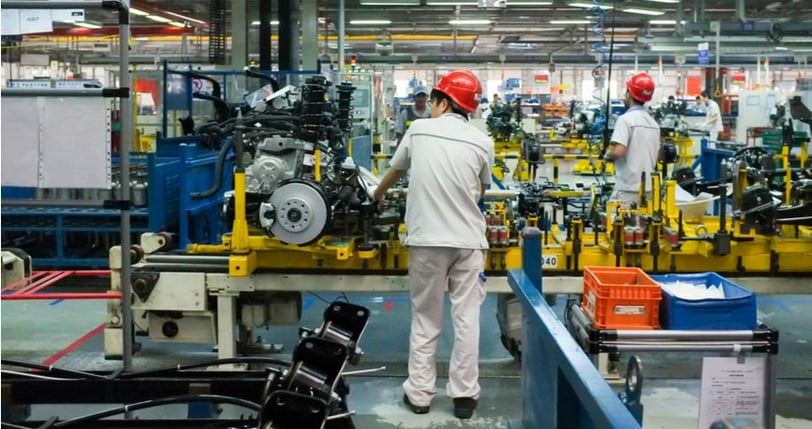Poka-yoke, otherwise known as mistake-proofing, is foundational to lean manufacturing. We at CMC are expert lean consultants who strive to mitigate issues through a process-driven approach.
To explain how influential and vital mistake-proofing can be, CMC has launched a new eBook called: "14 Mistake Proofing Examples: Improve Quality at Virtually No Cost." Read more about this free eBook and get your copy here.
Have you ever complained about a quality issue to a Chinese manufacturer, only to hear: “This is done manually so certain mistakes are impossible to avoid!”
In fact, by applying a little creativity and engineering knowledge, specific human errors can be made IMPOSSIBLE. That’s the whole idea behind mistake-proofing.
Mistake Proofing VS Error Proofing - what is the difference?
To put it simply, mistake proofing is adding a mechanism to either prevent defects or detect defects as soon as possible. However, when a defect cannot be prevented or detected, the next best option is to reduce the defect’s severity. This is called ‘error-proofing.’
Production Mistakes Don't Have To Be 'Inevitable'

It can be quite frustrating to be told in a production facility that mistakes 'cannot be avoided.' There are ways to check the quality and the production flow, either with QC inspectors or production operators. That’s the classic approach to improving the quality of products shipped to customers, but it doesn’t come without a cost!
Fortunately, there is a much better way: Mistake proofing.
In a poorly-designed manual process setup, there will always be mistakes.
Imagine working 8 to 12 hour days! Exhaustion, fatigue and the lack of energy will cause factory workers to lose momentum and become less efficient.
On top of that, let’s not forget about the manual inspection! If the Quality Control Officer inspects 1,000 pieces/a day and declares 950 as ‘good’, do you think those 950 are all good? I highly doubt it.
Many studies have shown that individual errors happen when systems and processes are not finely tuned. In other words, human error isn’t actually a human problem. It’s a problem with work systems, along with the lack of flexibility to augment worker processes.
This is a sad reality. If we wait until products are fully completed, end-of-line inspection becomes expensive and usually doesn't catch 100% of defects.
So, what is the best way to reduce the number of human mistakes in production?
The best approach is to work on processes to minimize errors. We already looked into the way statistical process control can be used. When it comes to manual operations, and assuming the process is already under control, the most robust approach is to mistake-proof that process.
The idea is to"build quality into the product" rather than "inspect quality out of the product".
As Deming wrote:
An inspection does not improve the quality, nor guarantee quality. Inspection is too late. The quality, good or bad, is already in the product.
The three levels of mistake proofing
There are several types of mistake-proofing devices/systems:
- Make the error impossible. That's the best, but it is not always possible.
- Detect the error immediately and act upon it (e.g. stop a machine, ring an alarm for an operator to come).
- Reduce the frequency of errors occurring: Use checklists, work instructions, etc. Some people refuse to call that "mistake-proofing" because it is not as good as the first two.
What does the eBook include?
In this free e-book, CMC engineers show many examples of mistake-proofing devices and systems:
- A change in a die design
- A change in a fixture design
- Several creative solutions to avoid or detect errors for close to zero investment
- Sensors (limit switch, proximity sensor, infrared sensor) that prevent processing under certain conditions
- A vision system that detects errors on a conveyor
- A set of vision systems that detect errors at each step of a process
- A visual color system that helps operators avoid making mistakes (a weak form of mistake proofing)
- A checklist (a weak form of mistake proofing)
Take action today
Your factory’s engineers, or your suppliers’ engineers, might not be trained in identifying opportunities for mistake-proofing systems. But they can learn from examples!
This free e-book can jump-start their creative juices and be the first step in a robust quality improvement initiative.
Are you ready to get your copy? Just click the button below to request your free download!





